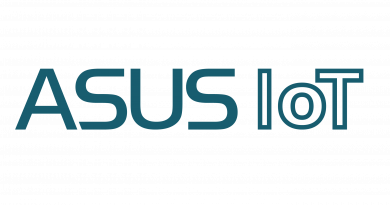Protecting the modern workplace from a wide range of undesirable software
Security is a fundamental component of the trusted and productive Windows experience that we deliver to customers through modern platforms like Windows 10 and Windows 10 in S mode. As we build intelligent security technologies that protect the modern workplace, we aim to always ensure that customers have control over their devices and experiences.
To protect our customers from the latest threats, massive amounts of security signals and threat intelligence from the Microsoft Intelligent Security Graph are processed by security analysts and intelligent systems that identify malicious and other undesirable software. Our evaluation criteria describe the characteristics and behavior of malware and potentially unwanted applications and guide the proper identification of threats. This classification of threats is reflected in the protection delivered by the Windows Defender Advanced Threat Protection (Windows Defender ATP) unified endpoint security platform.
 Malware: Malicious software and unwanted software
Malware: Malicious software and unwanted software
Among the big classifications of threats, customers may be most familiar with malicious software. Malicious software might steal personal information, lock devices until a ransom is paid, use devices to send spam, or download other malicious software. Examples of these types of threats are keyloggers and ransomware. Malware can get into devices through various infection vectors, including exploits, which undermine users’ choice and control of their devices. Windows Defender ATP’s next generation protections detect and block these malicious programs using local machine learning models, behavior-based detection, generics and heuristics, and cloud-based machine learning models and data analytics.
Some threats, on the other hand, are classified as unwanted software. These are applications that don’t keep customers in control of devices through informed choices and accessible controls are considered unwanted. Examples of unwanted behavior include modifying browsing experience without using supported browser extensibility models, using alarming and coercive messages to scare customers into buying premium versions of software, and not providing a clear and straightforward way to install, uninstall or disable applications. Like malicious software, unwanted software threats are malware.
Using a model that leverages predictive technologies, machine learning, applied science, and artificial intelligence powers Windows Defender ATP to detect and stop malware at first sight, as reflected in consistently high scores in independent antivirus tests.
Potentially unwanted applications
Some applications do not exhibit malicious behavior but can adversely impact the performance or use of devices. We classify these as potentially unwanted applications (PUA). For example, we noted the increased presence of legitimate cryptocurrency miners in enterprise environments. While some forms of cryptocurrency miners are not malicious, they may not be authorized in enterprise networks because they consume computing resources.
Unlike malicious software and unwanted software, potentially unwanted applications are not malware. Enterprise security administrators can use the PUA protection feature to block these potentially unwanted applications from downloading and installing on endpoints. PUA protection is enabled by default in Windows Defender ATP when managed through System Center Configuration Manager.
In March 2018, we started surfacing PUA protection definitions on VirusTotal. We have also updated our evaluation criteria page to describe the specific categories and descriptions of software that we classify as PUA. These are:
Browser advertising software: Software that displays advertisements or promotions or prompts the user to complete surveys for other products or services in software other than itself. This includes, for example, software that inserts advertisements in browser webpages.
Torrent software: Software that is used to create or download torrents or other files specifically used with peer-to-peer file-sharing technologies.
Cryptomining software: Software that uses your computer resources to mine cryptocurrencies.
Bundling software: Software that offers to install other software that is not digitally signed by the same entity. Also, software that offers to install other software that qualify as PUA based on the criteria outlined in this document.
Marketing software: Software that monitors and transmits the activities of the user to applications or services other than itself for marketing research.
Evasion software: Software that actively tries to evade detection by security products, including software that behaves differently in the presence of security products.
Poor industry reputation: Software that trusted security providers detect with their security products. The security industry is dedicated to protecting customers and improving their experiences. Microsoft and other organizations in the security industry continuously exchange knowledge about files we have analyzed to provide users with the best possible protection.
Customer protection is our top priority. Windows Defender Advanced Threat Protection (Windows Defender ATP) incorporates next-generation protection, attack surface reduction, endpoint detection and response, and automated investigation and remediation, and advanced hunting capabilities. We adjust, expand, and update our evaluation criteria based on customer feedback as well as new and emerging trends in the threat landscape. We encourage customers to help us identify new threats and other undesirable software by submitting programs that exhibit behaviors outlined in the evaluation criteria.
Michael Johnson
Windows Defender Research
Talk to us
Questions, concerns, or insights on this story? Join discussions at the Microsoft community and Windows Defender Security Intelligence.
Follow us on Twitter @WDSecurity and Facebook Windows Defender Security Intelligence.
READ MORE HERE




